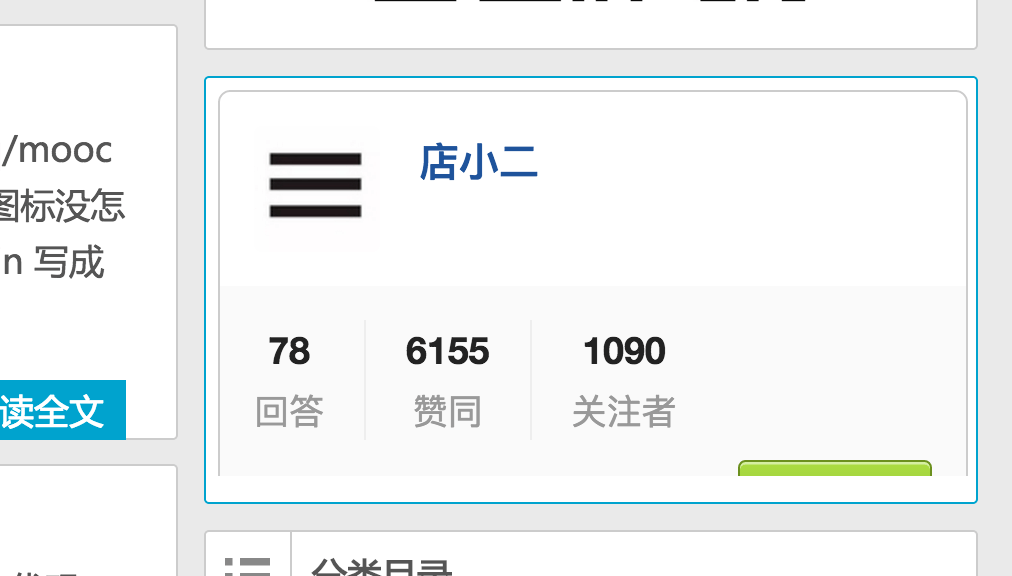A Faster and Better zhihu-card-server
zhihu-card 又有几个新用户了!
其实有些并不是新用户,只不过我上次没发现。Redis 里还有几条别的用户记录,但并未找到个人网站。
这篇文章主要讲什么呢?国庆及最近几天大改了后端架构,并且开源出来,所以就来说一说。这篇文章在我看来价值并不大,因为并没有包含多少探索的过程,不过姑且做个记录。

目前的架构长这个样。
jsDelivr 和 Chrome 的部分都在 zhihu-card 项目里,不是本文重点,总之后端会接收前端发的请求,并返回用户数据。
后端主要就三块,一个 Golang 的 HTTP Server,一个 Redis,一个 Nameko 的 local server。Go server 和 Redis 的交互就是很普通的 GET/SET,Redis 在 key 过期的时候会给 Go server 发通知让它去更新数据。不论是获取新用户数据还是更新已存在用户的数据,Go server 都是通过向跑在本地 Nameko server 发送一个请求,由 Nameko server 返回最新的用户数据。
OK,那么 Nameko 是什么?我最早是从大名鼎鼎的 Flask 作者 Armin Ronacher 的博文知道的,当然他并不是主要贡献者。Nameko 是一个用 Python 写的微服务框架,接口设计非常简洁,基本看一分钟文档就能上手。在做毕设的过程中我一度想尝试,不过后来发现需求不同转而使用了 huey(顺带一提 huey 也是个好东西,一个超轻量级的 task queue,该有的都有用起来也很稳定)。
所以为什么要用 Nameko?主要是因为我想用 zhihu-oauth,这样就可以省去因为知乎前端变动带来的代码修改工作。zhihu-oauth 是 Python 写的,那么 Nameko 就非常合适了。本来也不是说一定要用 zhihu-oauth,如果有 Go 的 zhihu oauth 客户端更好,这样连 Nameko 都不需要,但是没有啊。另外我对维护者 7sdream 同学的代码水平和修 bug 速度还是很有信心的,感谢他的出色工作。
在这次大改之前,后端会在请求到来时检查 Redis 中有无对应数据,如果没有,就把知乎的个人主页抓下来,提取数据存入 Redis 并返回给用户。这么做有两个问题,其一是知乎前端一变我就得改代码,其二是速度——每个 hit 到 cache miss 的访问者将不得不额外忍受一个访问知乎个人主页的 RTT。虽然不是大问题,但总觉得不爽。现在和知乎的交互全交给 zhihu-oauth 去做,速度比 GET 网页快很多。另一方面,由于 Redis 在 key 过期时会通知 Go server 并获取最新数据,因此对于已存在的用户,Redis 中总是有数据的,进一步减少了访问耗时。这个结论只在数据很少的时候成立,根据 Redis 文档,key expire 是每秒检查 10 次,每次 20 个:
Specifically this is what Redis does 10 times per second:
- Test 20 random keys from the set of keys with an associated expire.
- Delete all the keys found expired.
- If more than 25% of keys were expired, start again from step 1.
现在的数据量完全可以保证在 1s 内检查完所有 key。
zhihu-card-server 目前还不完善。上面我说 Nameko 很好,其实这个库用起来特别坑,有些很重要的事文档里是不写的。目前又遇到程序莫名其妙退出的 bug,还没有解决,只好先加上一个 fallback,在无法从 Nameko 获取数据的时候直接访问网页。还有 Go server 的异常处理,logging 这些也还没写……总之慢慢搞吧。
最后推荐一下我正在用的 markdown 编辑器 typora,前段时间正好在想类似功能,发现已经有人做出来了。简单来说,你不再需要左边 markdown 右边渲染了,渲染和文本现在放在一起,就好像在写 Word 一样。



